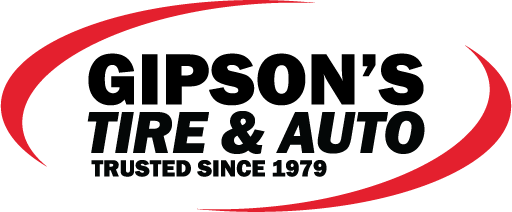Obtaining new tires can be a time-consuming and costly process, and understandably, you’d want to postpone this expense for as long as possible. One of the leading factors that can prematurely wear out your tires is poor tire alignment.
Although a tire alignment isn’t strictly required when getting new tires, it is highly advisable. Aligning your tires can significantly prolong the life of your new tires, ultimately saving you both time and money.
Why is a Tire Alignment Necessary with New Tires?
When you fit new tires, they don’t automatically lose their alignment. However, having an alignment performed when you install new tires will extend the lifespan of your fresh rubber and enhance your driving experience.
If you’re concerned about your budget and you believe your tires are in good alignment because you’ve recently had them checked, consulting with your technician for expert guidance is a practical step.
Tire alignment can shift over time due to normal wear and tear, and it’s considered a routine aspect of vehicle maintenance, akin to getting an oil change or replacing filters.
Nonetheless, some occurrences and factors can lead to tires going out of alignment more rapidly. You might require alignments more frequently if you:
- Frequently drive off-road or on dirt roads
- Reside in an area riddled with potholes
- Accidentally hit a curb
- Cross speed bumps at excessive speeds
- Were involved in a minor accident
What is a Tire Alignment?
A tire alignment ensures that your tires are oriented correctly and positioned at the proper angles. It corrects one or more of three types of misalignment: caster, toe, and camber, each of which presents its own potential issues.
Though it’s advisable to have your alignment checked when fitting new tires, you can detect some alignment problems by examining the wear patterns on your old tires. If you observe irregular tread wear patterns, it’s a clear indicator that you should have your alignment assessed when replacing your tires.
Toe Tire Alignment:
The majority of tire alignment issues pertain to the “toe” of your tires. This is particularly critical because toe problems can lead to severe tire wear.
Toe refers to the angle at which the tires point concerning the direction your vehicle is facing. Imagine looking down from above your car to see your tires; poor toe alignment would result in your tires pointing left or right instead of straight ahead. When the toe alignment is off, you may experience steering and handling issues, as well as accelerated tire wear. Toe-related tire wear usually manifests as uneven wear on the right or left half of the treads, depending on the tire’s misalignment direction.
Camber Tire Alignment:
Camber alignment pertains to the angle of your tires concerning the ground. Proper camber alignment ensures that your tires rest flat on the ground, applying even pressure with no deviation. If camber alignment is incorrect, your car may tend to pull to one side when you aim to drive straight. Visualize kneeling in front of your car and inspecting the tires; camber-related wear would make one-half of your tire appear more inflated than the other, resulting in a trapezoid-like appearance when viewed head-on.
Caster Tire Alignment:
Caster pertains to the angle of your steering axis in relation to your tires. In an ideal alignment, the steering axis should be precisely perpendicular to the ground. If it deviates from this, it’s considered misaligned. Caster misalignment doesn’t impact your tires like other types of misalignment do because your tires should roll forward as usual, even if the caster alignment is off. You may detect this alignment issue by observing how your vehicle handles – if your caster is misaligned, your car may pull to one side or feel challenging to control.
Consequences of Tires Being Out of Alignment:
Misaligned tires can affect several aspects of your vehicle’s performance. The most apparent effect is that it can cause your car to veer to one side. Additionally, you might experience unusual vibrations, compromised handling, or strange noises emanating from your vehicle.
Opting for a tire alignment can ultimately save you money. Improperly aligned tires lead to uneven tire wear, necessitating more frequent tire replacements. Misalignments can also increase rolling resistance, which measures the friction between your tires and the road, potentially decreasing fuel efficiency.
Is It Necessary to Align All Four Tires Simultaneously?
Certain vehicles feature solid rear axles, allowing for alignment adjustments only on the front wheels. However, in most modern vehicles equipped with independent rear suspension systems, it’s recommended to align all four tires simultaneously for the best results.
How Long Does a Tire Alignment Take?
While the duration may vary, the majority of tire alignments typically require about 30 minutes to an hour. If your vehicle has four-wheel drive or all-wheel drive, the alignment process may take a bit longer. Additionally, older vehicles can be more challenging to work with due to rust or wear and tear, potentially prolonging the alignment process.
How Do You Determine If You Need a Tire Alignment?
Since there are numerous reasons for tires to go out of alignment, the frequency of necessary tire alignments can vary. Recommendations may range from every 5,000 to 10,000 miles to once a year or every other oil change.
In general, you should consider getting your tires aligned if you notice:
- Uneven wear on your tread or tires
- Vibrations or shaking in your steering wheel
- Your vehicle drifting to one side when the steering wheel is centered
Even if you don’t observe these signs, it’s a prudent practice to have your alignment checked every few thousand miles to ensure that you’re maximizing the lifespan of your tires. Schedule An Appointment with our tire experts for an alignment today.


